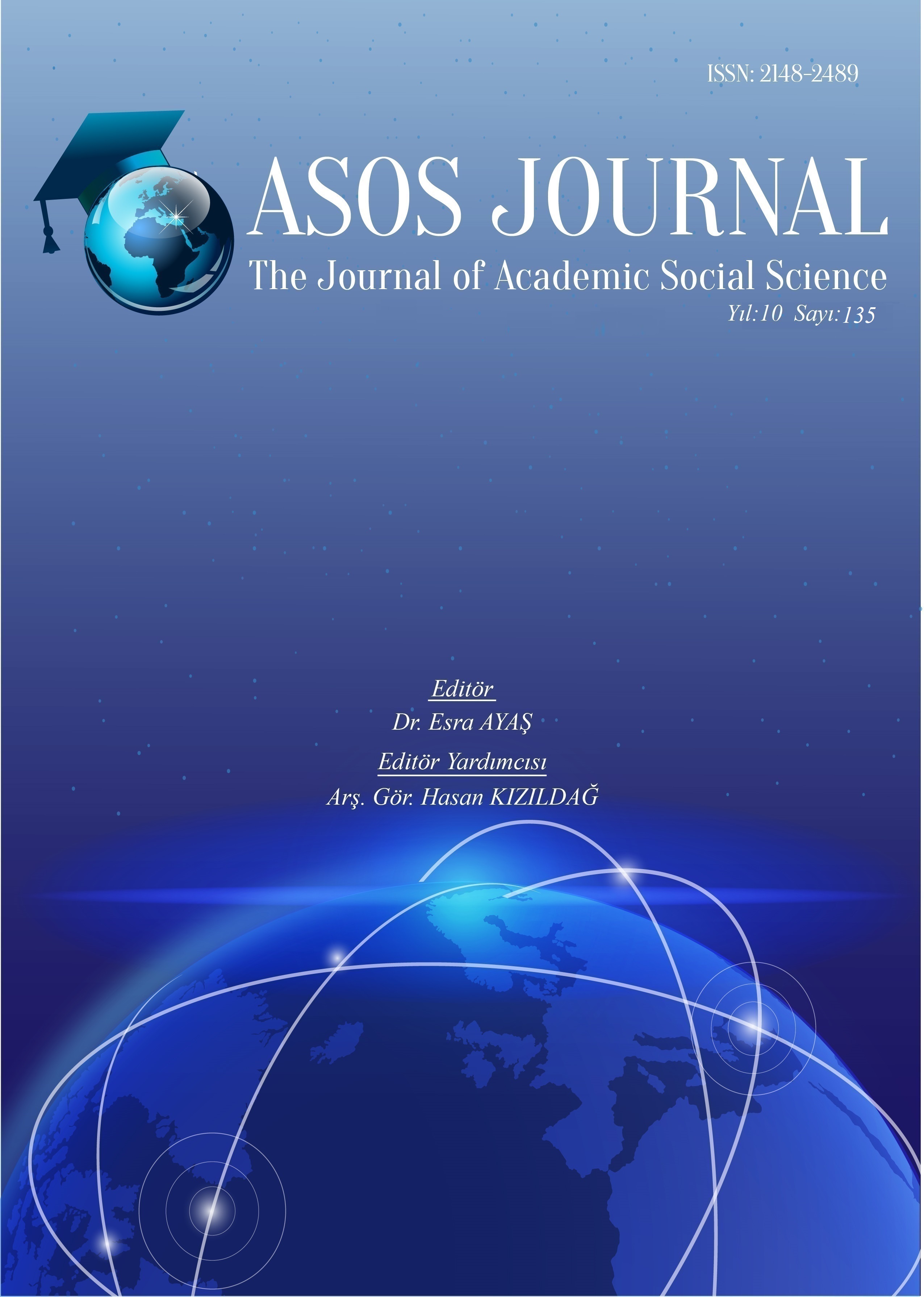Author :
Abstract
Teknolojideki hızlı değişim imalat sanayini de etkilemekte. Firmaların bu teknolojinin ve dijtalleşmenin bu kadar hızlı geliştiği ortama uyum sağlamaları gerektiği açıktır. Dördüncü Sanayi Devrimi'ne kadar hızlı adaptasyon sağlanırsa, şirketler bu devrimsel ortamda rakiplerine göre avantaj elde edecek ve sürdürülebilir kalkınmayı gerçekleştirecektir. Kuşkusuz gelişmiş ülkeler düzeyine çıkmaları veya bu ünvanı korumaları da aynı konuya bağlı olacaktır. Bu çalışmada Türkiye'de üretim sektöründe faaliyet gösteren firmaların Endüstri 4.0 olgunluk düzeyleri incelenmiştir. Verilerin analizinde SPSS v28 programı kullanılarak yapılan korelasyon ve regresyon analizleri sonucunda; Şirketlerde kullanılan dijital uygulamalar; ERP %70,1 yüksek kullanım oranı ile birinci, CRM %64,5 ile ikinci, MRP %31,0 ile üçüncü ve BI %28,9 ile dördüncü sırada yer almaktadır. Yine kullanılan Endüstri 4.0 uygulamaları; Büyük Veri ve Analitik %46,7 ile ilk sırada, Siber Güvenlik %45,7, Bulut Bilişim %44,7, Yapay Zeka %28,9, Derin Öğrenme ve Makine Öğrenimi %25,4, Otonom Robotlar %22,3 olarak tespit edilmiştir. Diğer yandan, sektöre göre Endüstri 4.0 olgunluk seviyeleri; Lojistik/Nakliye: 3,85 ilk sırada, BT/Elektronik/Yazılım: 3,83 ikinci sırada ve Enerji: 3,80 üçüncü sırada yer almaktadır.
Keywords
Abstract
The rapid change in technology is also affected to the manufacturing industry. It is clear that companies need to adapt to the environment where this technology and digitalization are developing so rapidly. If rapid adaptation is achieved until the Fourth Industrial Revolution, companies will gain an advantage over their competitors and achieve sustainable development in this revolutionary environment. Undoubtedly, their rise to the level of developed countries or their protection of this title will depend on the same issue. In this study, the Industry 4.0 maturity level of companies in the production sector in Turkey has been examined. As a result of correlation and regression analyzes using SPSS v28 program in the analysis of the data; Digital applications used in companies; ERP ranks first with a high usage rate of 70.1%, CRM is in the second place with 64.5%, MRP is in the third place with 31.0% and BI is in the fourth place with 28.9%. Industry 4.0 applications used again; Big Data and Analytics ranked first with 46.7%, Cyber Security 45.7%, Cloud Computing 44.7%, Artificial Intelligence 28.9%, Deep Learning and Machine Learning 25.4%, Autonomous Robots 22.3% detected. On the other hand, Industry 4.0 maturity levels by sector; Logistics/Transport: 3.85 in first place, IT/Electronics/Software: 3.83 in second place and Energy: 3.80 in third place.
Keywords
- Alçın, S. (2016). Üretim İçin Yeni Bir İzlek: Sanayi 4.0. Journal of Life Economics, 3 (2), 19- 30.
- Altınpulluk, H. (2018). Nesnelerin İnterneti Teknolojisinin Eğitim Ortamlarında Kullanımı. AUAd, 4(1), , 94-111.
- Aydın, N. (2021, 08 23). Türkiye'nin Endüstri 4.0 Platformu. Nesnelerin İnterneti ve 5G Teknolojisi: https://www.endustri40.com/nesnelerin-interneti-ve-5g-teknolojisi/ adresinden alındı
- Banger, G. (2018). Endüstri 4.0 ve Akıllı İşletme. Eskişehir: Dorlion Yayınları.
- Centre for the New Economy and Society. (2018). The Future of Jobs Report. Cologny/Geneva Switzerland: World Economic Forum.
- Gartner. (2022). https://www.gartner.com/en/information-technology/glossary/smart- factory#:~:text=The%20smart%20factory%20is%20a,%2C%20self%2Dadapting%20m anufacturing%20capability. adresinden alındı
- Guzmán, V., Muschard, B., Gerolamo, M., & Kohl, H. (2020). Characteristics and Skills of Leadership in the Context of Industry 4.0. Procedia Manufacturing Volume 43, 543550.
- Hecklau, F., Galeitzke, M., Flachs, S., & Kohl, H. (2016). Holistic approach for human resource management in Industry 4.0. Science Direct.
- Karasar, N. (2016). Bilimsel Araştirma Yöntemi. Ankara: Nobel.
- Kayabaşı, Y. (2005). Virtual Reality And Using It For Educational Purposes. The Turkish Online Journal of Educational Technology – volume 4 Issue 3 Article 20.
- Kaspersky. (2022). What is Cyber Security?: https://www.kaspersky.com/resource- center/definitions/what-is-cyber-security adresinden alındı
- King, A. (2022). What are cyber-physical systems?: https://www.rmit.edu.au/news/c4de/what- are-cyber-physical-systems adresinden alındı
- Lee, J., Kao, H., & Yang, S. (2014). Service Innovation & Smart Analytics for Industry 4.0 Big Data Environment. Procedia Cirp, 16.
- Marston, S., Li, Z., Bandyopadhyay, S., & Zhang, J. (2011). Cloud Computing: The Business Perspective. . Decision Support Systems, 51(1).
- Nilsson, N. (2019). Yapay Zeka Geçmişi ve Geleceği. İstanbul: Boğaziçi Üniversitesi Yayınevi.
- Oracle. (2022). https://www.oracle.com/tr/artificial-intelligence/what-is-ai/.
- Oracle. (2022). Why is Internet of Things (IoT) so important?: https://www.oracle.com/tr/internet-of-things/what-is-iot/ adresinden alındı
- Özdoğan, O. (2018). Endüstri 4.0 - Dördüncü Sanayi Devrimi ve Endüstriyel Dönüşümün Anahtarları. İstanbul: Pusula Yayıncılık.
- Perry, J. (2017). What is big data? More than volume, velocity and variety: https://developer.ibm.com/blogs/what-is-big-data-more-than-volume-velocity-andvariety/ adresinden alındı
- Porfírio, J., Carrilho, T., Augusto, J., & Jardim, J. (2021). Leadership Characteristics and Digital Transformation. Journal of Business Research, Volume 124, January, 610-619.
- Rogers, D. (2017). Dijital Dönüşümde Oyunun Kuralları. İstanbul: Optimist Yayım.
- Schwab, K. (2017). Dördüncü Sanayi Devrimi. İstanbul: Optimist Yayım.
- Schwab, K. (2019). Dördüncü Sanayi Devrimini Şekillendirmek. İstanbul: Optimist Yayım.
- Shrikant, K., Swami, V., Doiphode, S., & Singh, V. (2021). Advanced Applications of Artificial Intelligent Systems in Civil Engineering: A review. Earth and Environmental Science, 822(1).
- Soysal, M., & Pamuk, N. (2018). Yeni Sanayi Devrimi Endüstri 4.0 Üzerine Bir İnceleme. Verimlilik Dergisi, 1(1).
- Sultan, N. (2010). Reaching for the "cloud": How SMEs can manage. International Journal of Information Management.
- The Boston Consulting Group, & TÜSİAD. (2016). Türkiye'nin Küresel Rekabetçiliği İçin Bir Gereklilik Olarak Sanayi 4.0: Gelişmekte Olan Ekonomi Perspektifi. İstanbul: TÜSİAD-T/2016-03/576.
- TOBB. (2016). Sanayi 4.0’a hazır mıyız? Ekonomik Forum Dergisi, Sayı:259.
- Westerman, G., Bonnet, D., & McAfee, A. (2015). Leading Digital - Dönüşüm için Teknolojiyi Kullanmak. İstanbul: Türk Hava Yolları Yayınları.
- Virtual Reality Society. (2022). What is Virtual Reality?: https://www.vrs.org.uk/virtual- reality/what-is-virtual-reality.html adresinden alındı
- Yıldırım, E. Y. (2018). Cyber Attacks Directed Information Systems (IS) and Maintenance of Cyber Security. 2nd International Vocational Science Symposium., IVSS .
